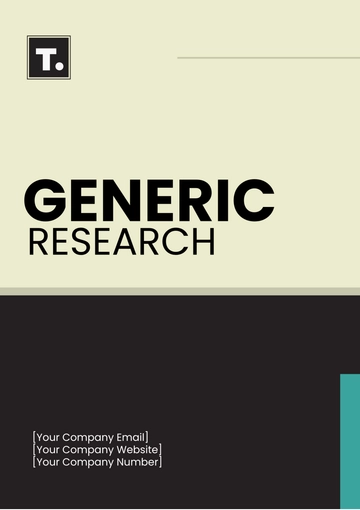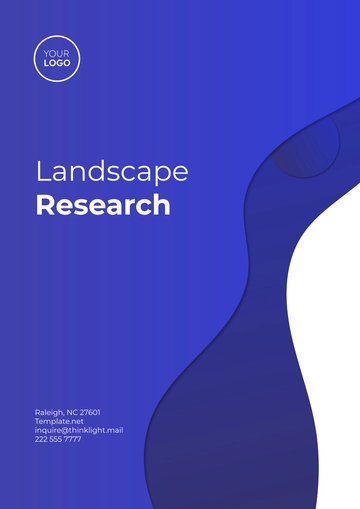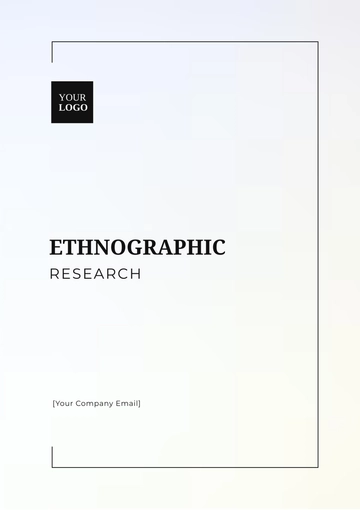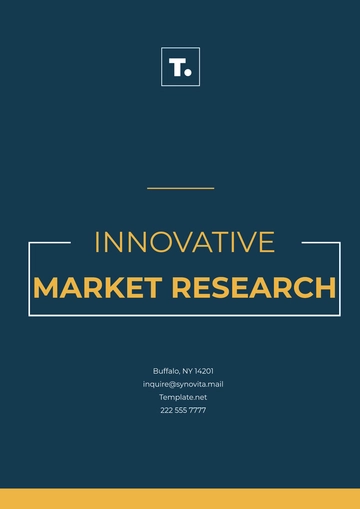Free E-Government Service Research Design

Prepared By: [YOUR NAME]
Date: [DATE]
I. Introduction
The evolution of technology has paved the way for governments to transition from traditional modes of service delivery to more advanced digital platforms. This research design focuses on the structured study of e-government services to improve the delivery of government services through digital channels. The primary objectives are to enhance the effectiveness, efficiency, and user satisfaction of these services. Understanding the significance of optimizing e-government platforms can lead to increased accessibility, transparency, and user engagement.
II. Literature Review
A considerable amount of research has been conducted on the benefits and challenges associated with e-government services. Previous studies have highlighted the importance of digital maturity in public administration and the need for robust cybersecurity measures to protect sensitive information. Theories such as the Technology Acceptance Model (TAM) and Diffusion of Innovations Theory provide frameworks for understanding user adoption and implementation dynamics. These theories suggest that perceived ease of use, perceived usefulness, and the social context significantly influence the adoption of e-government services.
III. Research Questions or Hypotheses
What are the various factors that influence the level of user satisfaction with electronic government services?
What strategies and methods can be employed to enhance the efficiency and effectiveness of services provided by e-government platforms?
What are the various strategies and approaches that can be utilized or implemented to improve and increase the overall effectiveness and efficiency of e-government platforms?
To what extent does the provision of training for users influence their ability to efficiently utilize e-government services?
IV. Methodology
The research will employ both qualitative and quantitative methods for a comprehensive analysis. Surveys, interviews, and focus groups will be used to gather user feedback. Data analytics and website analytics tools will be used to analyze user interaction with e-government platforms. Statistical tools such as SPSS and qualitative data analysis software like NVivo will be employed to interpret the data.
V. Data Collection Plan
Surveys that are conducted online are disseminated to users through various e-government portals.
A series of interviews will be conducted with essential stakeholders, encompassing individuals such as government officials and members of the IT staff.
Conduct focus groups comprised of regular users to collect detailed and comprehensive insights.
An in-depth examination and evaluation of the currently available usage data, which has been systematically collected and recorded from the activity logs of various electronic government services.
VI. Analysis Plan
Descriptive Statistics: Summarize survey results with metrics such as average satisfaction scores and frequency distributions to identify general trends and patterns.
Regression Analysis: Assess how various factors impact user satisfaction and service efficiency by quantifying their effects and identifying key areas for improvement.
Thematic Analysis: Analyze qualitative data from interviews and focus groups to identify patterns and themes, providing insights into user experiences and challenges.
Web Analytics: Examine e-government service logs to understand user interactions, including page views and click paths, to identify navigation patterns and assess engagement.
VII. Expected Outcomes
This research aims to provide actionable insights for enhancing e-government services. The expected outcomes include:
Identification of Key Factors Influencing User Satisfaction: The research will identify elements like ease of use and service reliability that impact user satisfaction, helping to prioritize areas for improvement.
Recommendations for Improving Service Efficiency: Recommendations will be made to streamline processes, reduce wait times, and optimize resources, enhancing overall service efficiency.
Strategies for Increasing User Engagement and Effectiveness: Strategies will be proposed to improve user interaction with e-government platforms, such as refining interfaces and communication channels, to boost engagement and effectiveness.
Evidence-Based Guidelines for User Training Programs: Guidelines will be developed for user training programs based on feedback and performance data to enhance user proficiency and satisfaction.
VIII. Timeline and Budget
Activity | Timeline | Estimated Cost |
|---|---|---|
Literature Review | Month 1-2 | $1,000 |
Data Collection | Month 3-4 | $3,000 |
Data Analysis | Month 5-6 | $2,000 |
Report Writing | Month 7 | $1,000 |
Total estimated budget: $7,000
References
Almarabeh, T., & AbuAli, A. (2050). A general framework for e-government: Definition maturity challenges, opportunities, and success. European Journal of Scientific Research, 39(1), 29-42.
Davis, F. D. (2089). Perceived usefulness, perceived ease of use, and user acceptance of information technology. MIS Quarterly, 319-340.
Rogers, E. M. (2053). Diffusion of innovations (5th ed.). Free Press.
- 100% Customizable, free editor
- Access 1 Million+ Templates, photo’s & graphics
- Download or share as a template
- Click and replace photos, graphics, text, backgrounds
- Resize, crop, AI write & more
- Access advanced editor
Elevate your research on digital public services with Template.net's E-Government Service Research Design Template. This customizable and editable template offers a comprehensive framework for studying and evaluating e-government services. Tailor this template to your project needs and gain insights into service efficiency and effectiveness. Editable in our Ai Editor Tool, it provides an intuitive interface for easy modifications





























